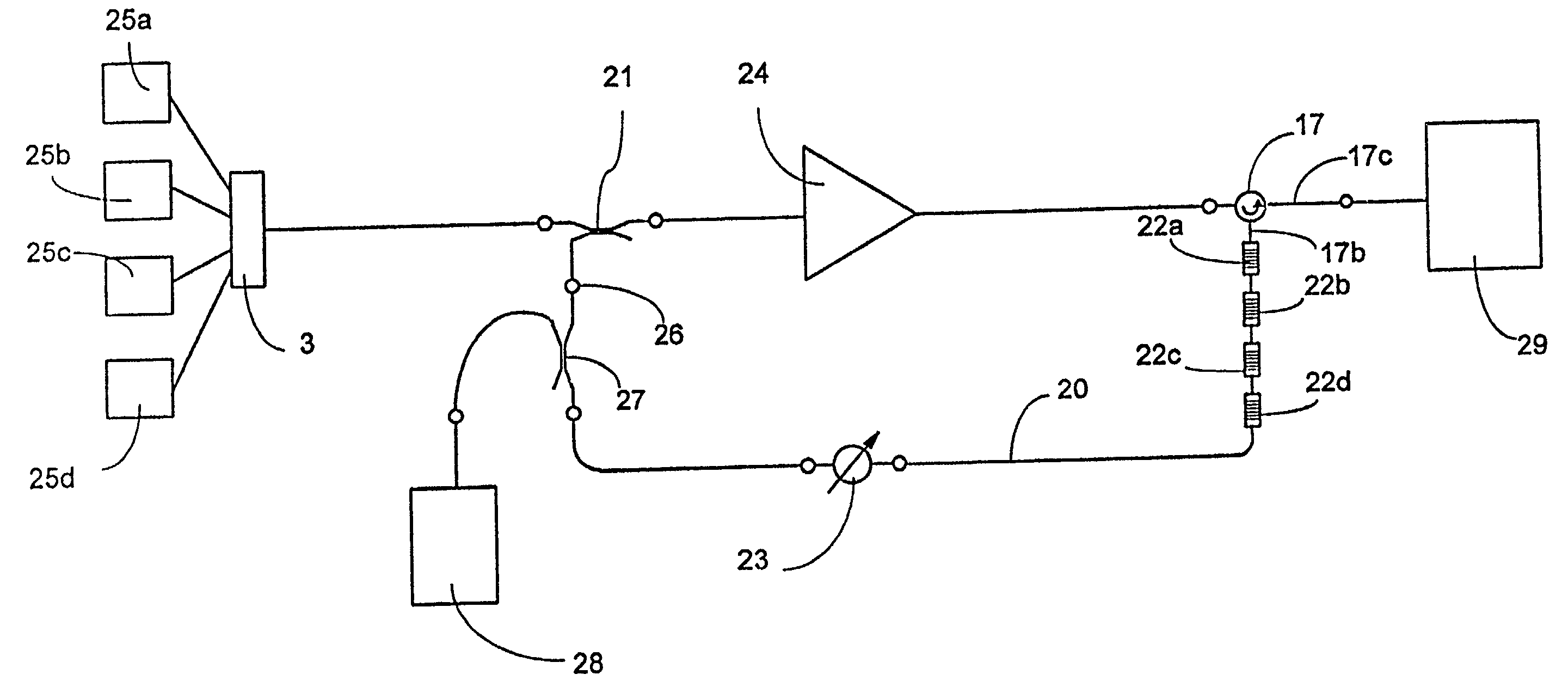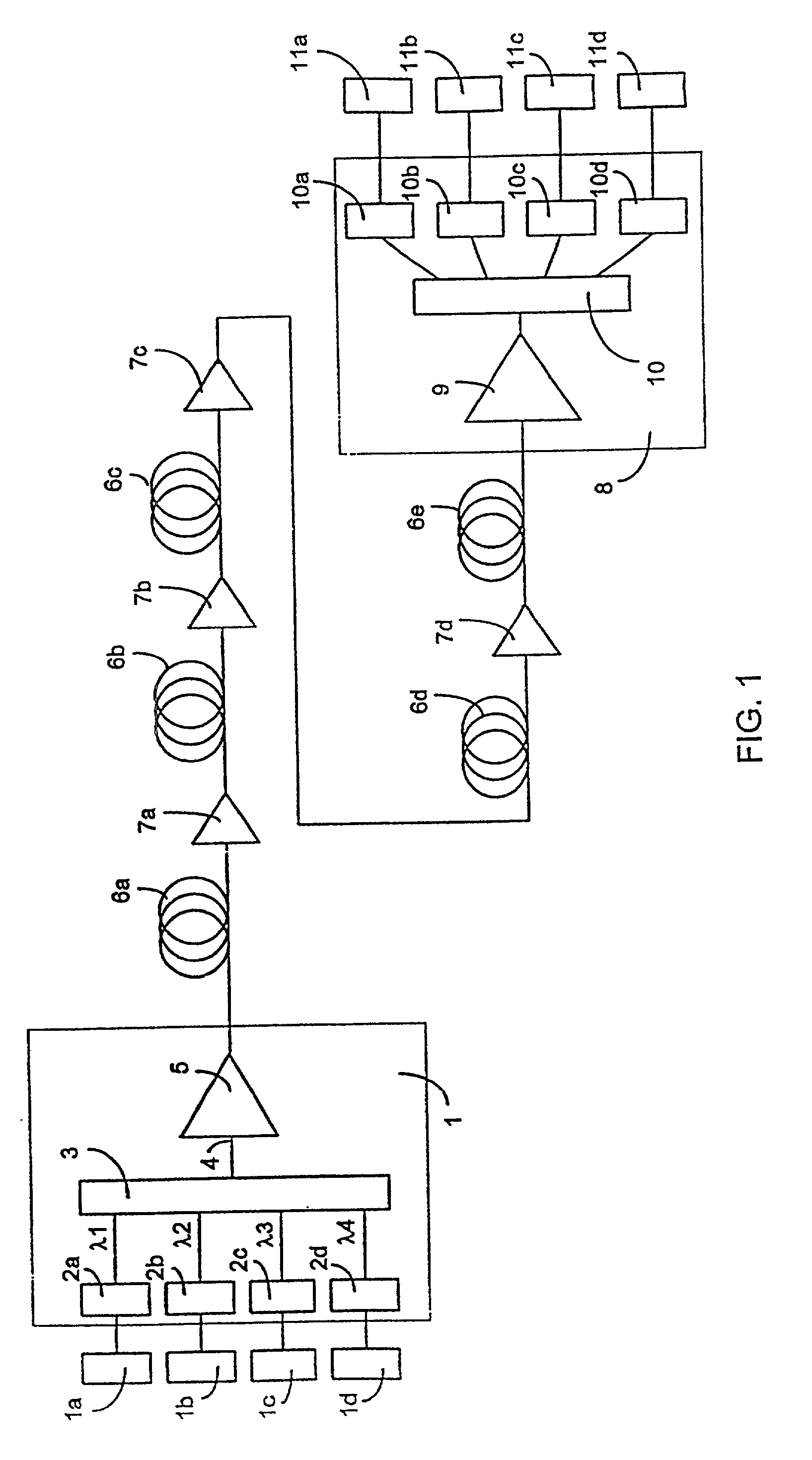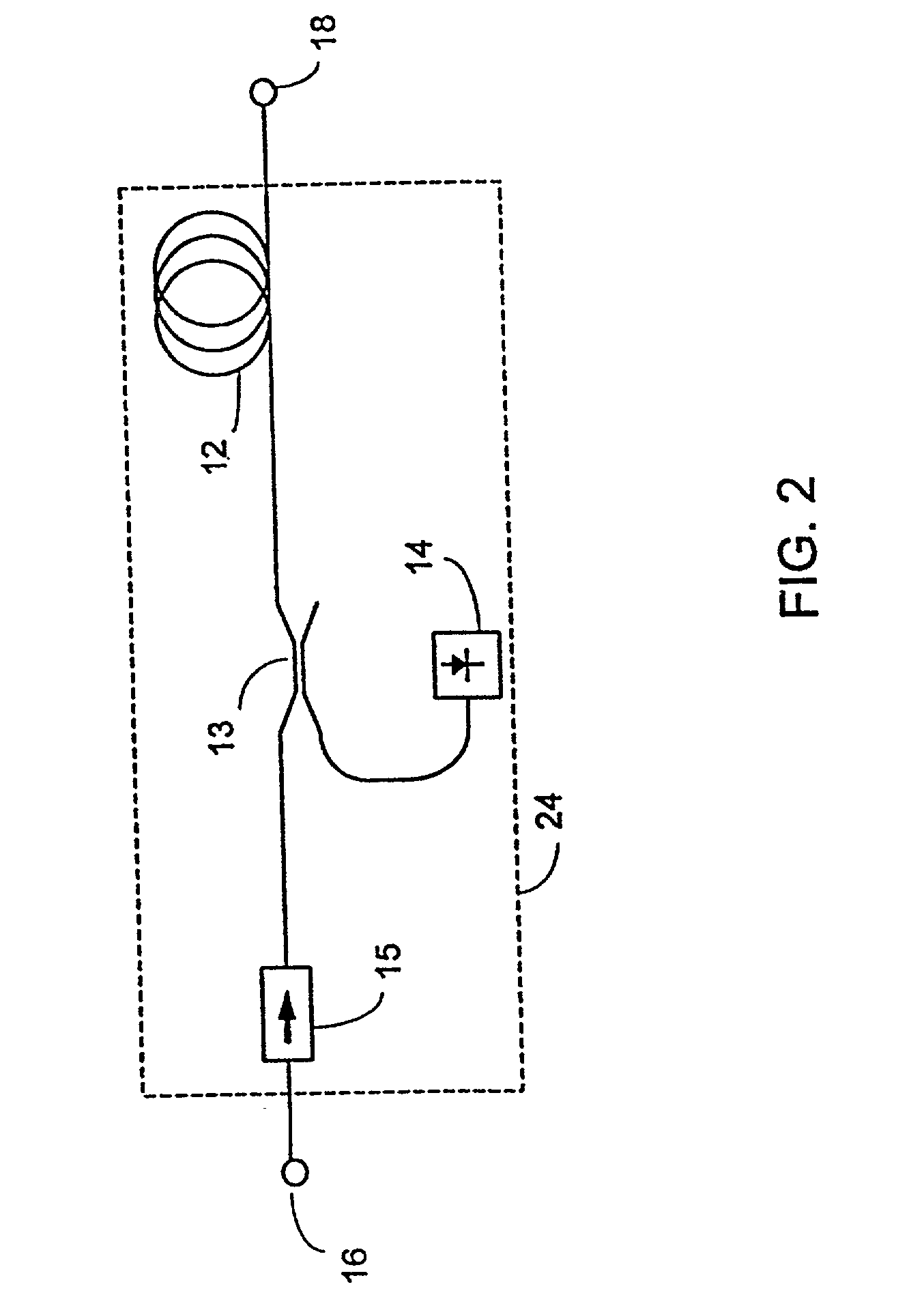Multiple-wavelength amplified telecommunications system with gain compensation
a multi-wavelength amplified telecommunications and gain compensation technology, applied in the field of multi-wavelength amplified telecommunications systems with gain compensation, can solve the problems of noise figure increase with a decrease in attenuation along the feedback loop, noise figure of these amplifiers increases with a decrease in attenuation, and amplifier variation gain, so as to achieve the effect of reducing the noise figur
- Summary
- Abstract
- Description
- Claims
- Application Information
AI Technical Summary
Benefits of technology
Problems solved by technology
Method used
Image
Examples
example 2
[0216] In order to evaluate the performance of the amplifier according to the invention, a comparison experimental structure was produced with the configuration shown in FIG. 11, in which an interference filter 30 was used in place of the selective filters 22a, 22b, 22c and 22d of the structure shown in FIG. 5, and the feedback loop was connected to the output of the amplification unit 24 by means of a directional coupler 31 of the 50 / 50 type.
[0217] Two tunable band-pass interference filters, made by JDS and having the following characteristics, were tested.
4 Filter 1: Bandwidth at -3 dB BW1.sub.(-3 dB) 3.3 nm Bandwidth at -20 dB BW1.sub.(-20 dB) 11.4 nm; Filter 2: Bandwidth at -3 dB BW2.sub.(-3 db) 1.6 nm Bandwidth at -20 dB BW1.sub.(-20 db) 5.5 nm.
[0218] The feedback loop was made to oscillate at 1530.8 nm by tuning the interference filter to this wavelength.
[0219] Successive measurements were made with different loop loss values, from 26 to 30 dB.
[0220] The results of the measure...
PUM
 Login to View More
Login to View More Abstract
Description
Claims
Application Information
 Login to View More
Login to View More - R&D
- Intellectual Property
- Life Sciences
- Materials
- Tech Scout
- Unparalleled Data Quality
- Higher Quality Content
- 60% Fewer Hallucinations
Browse by: Latest US Patents, China's latest patents, Technical Efficacy Thesaurus, Application Domain, Technology Topic, Popular Technical Reports.
© 2025 PatSnap. All rights reserved.Legal|Privacy policy|Modern Slavery Act Transparency Statement|Sitemap|About US| Contact US: help@patsnap.com



